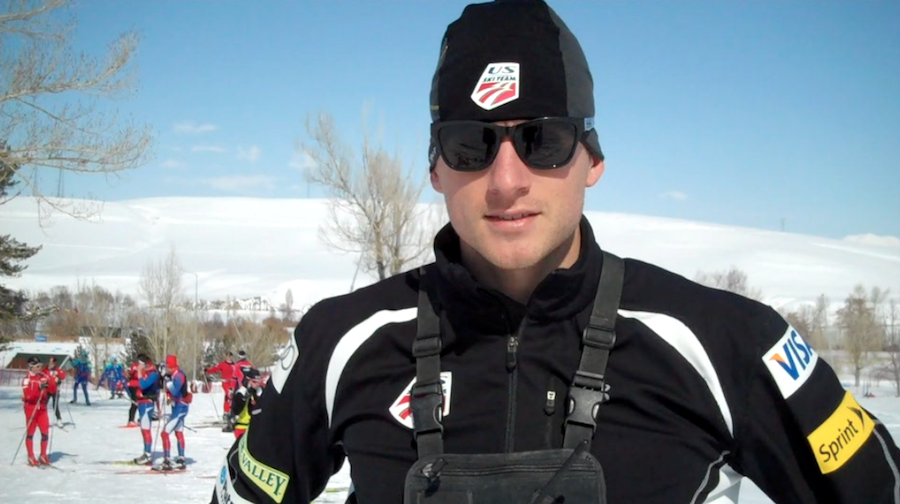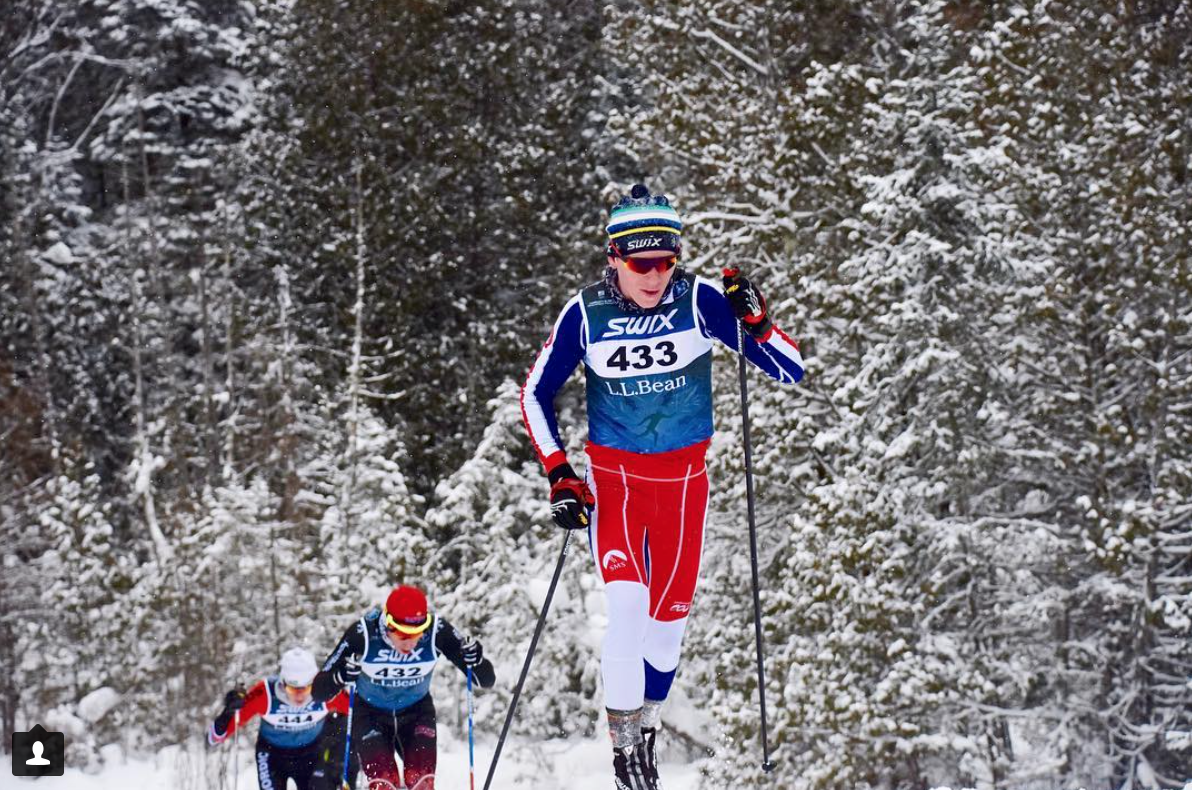
The newest hire to the U.S. Ski Team (USST) coaching ranks is 34-year-old Gus Kaeding. Kaeding is a newly minted MBA as of 2017 and is fresh off a gig with the U.S. Olympic Committee based out of Colorado Springs. Kaeding was a junior skier at the Stratton Mountain School (SMS), skied collegiately at Northern Michigan University, and coached at Central Cross Country and went on to become head coach of the SMST2 Team prior to studying for his master’s.
Although a core New Englander, Kaeding has settled in Park City, Utah, home of U.S. Ski and Snowboard, where he’ll wear two hats.
“I have two jobs and work in two different departments,” Kaeding said on the phone on June 20. “One part is with the cross-country ski team, and it is because we have increased demand in our development ranks. … The second part of my job is essentially a sport-science data role and it is across the entire U.S. Ski and Snowboard organization. Eventually, that role will be to implement a data management program to help organize athlete data — whether it be race data, testing data, or simply just contact data. And it involves setting up the structures to do that which is something that sounds easier than it actually is.”

This season’s development team has expanded from four to seven athletes. With the near doubling in size of the D-team, Kaeding was brought on as part of the USST’s decision to place more resources in support of its younger skiers. The A and B teams saw the departure of Kikkan Randall (retired), Liz Stephen (retired), and Andy Newell (non-World Cup race focus), and Rosie Brennan. Kevin Bolger was the only new addition.
National governing bodies often prioritize after an Olympic quadrennial. Adding Kaeding to help evolve the robust foundation laid down by longtime development coach Bryan Fish is nothing seismic.
“[Kaeding] has been hired as a D-team coach specifically to help nurture and shepherd this group of athletes through the next few years of their development,” USST Head Coach Chris Grover told FasterSkier this spring. Kaeding will report directly to Grover as it relates to his D-team cross-country coaching.
In terms of his primary function with the D-team, Kaeding described it as meeting the specific needs of the seven D-team athletes. That could entail anything from on-the-ground coaching and assistance during camps to helping facilitate better communication between an athlete’s primary coach and the national team.
“In the short term, these athletes have goals,” Kaeding said. “And I am relatively comfortable saying my goal is to help them achieve their goals. Ultimately, the goal is to convert these athletes to the B and the A team.”

New to the D-team is Ben Ogden, and he’s a good example of how Kaeding sees his job as a facilitator between the many coaches involved with a specific skier. The 18-year-old Ogden trained with the USST this spring in Bend, Oregon. He then settled at home in Vermont to train with SMST2 coach Patrick O’Brien. He’ll matriculate this fall as a freshman at the University of Vermont and train with coach Patrick Weaver.
“The most important aspect with my job with Ben is to be very proactive with communication,” Kaeding said. “I think in the past, and I have been on the other side of the coin, too. when I was coaching at Stratton and we had development team athletes, one of the areas I struggled with when trying to talk to the U.S. Ski Team was communication. Basically, it was not really anyone’s job, whether I had Skyler Davis or Paddy Caldwell. They all had a different person to go to, and it was different from camp to camp and race to race. So it got a little hard. Things fell through the cracks. My first and foremost job is to not let things fall through the cracks.”
Shepherding D-team athletes is one core responsibility for Kaeding. When in Park City at the USST Center of Excellence, Kaeding will be spearheading a project that will begin collecting data on athletes and their performance. Further along, he’ll help create an interface to manage and communicate that information.
He explained that U.S. Ski & Snowboard is in its nascent phase of proprietary data collection and management.
“The best practice is to seek out a question that you want to answer and then decide what data you need to answer that question,” Kaeding said of how he is approaching the project. “And we are so in the infancy of this process we don’t even know what question we are trying to answer right now.”
He explained that their data collection will most likely involve a mix of athlete-specific GPS and heart-rate information. In the near term, Kaeding foresees the low-hanging fruit of data management as something smaller scale than implementing a program-wide U.S. Ski & Snowboard data collection and analyses initiative.
“Right now, there are much easier wins,” he said. “So like this data-management system, it sounds sexy, but sometimes the biggest wins are just the small things. Like, you can have a dashboard for a particular athlete. This is like a notepad where all the athletes, coaches, sport psychologist, maybe they have a strength trainer — and they can see maybe this athlete had a bad race two days ago. Should that affect how they make their strength plan because they are probably 2000 miles away and may be unable to talk to their coach? Or if it’s a sport psych, maybe they should be addressing a particular issue with this athlete that the coaches brought up.”
On the job since May, Kaeding has begun to collect and organize past training logs from D-team athletes. Part of his work has been comparing that data with training information from Norway’s development team. As part of his outreach, Kaeding provided a summary of the USST D-team men’s training hours and intensity ranges from ages 15-18. The bottom row of Table 1 includes data (averaged) from Norway’s development team.
(While he does not have complete data from the USST D-team women yet, he explained that their total hours would be slightly lower. Further, it is unclear if the Norwegian data is an aggregate of both men and women. Kaeding also clarified L5 training. “Everyone records Level 5 slightly differently, so take that column with a grain of salt.”)

“USA skiers are doing slightly less L1, but replacing it with L2,” Kaeding noted in an email about Table 1’s data. “We are doing more strength and less L4 training. As you can see from the above hours breakdown, [Norway] is actually doing almost twice the L4 training on average.”
The second table from Kaeding compares Norway’s and the USA’s D-team (men only) training by percent of average total time, ages 15-18, in specific training zones.

Kaeding related that back when he first learned Norwegian juniors were training relatively high hours, it came as a surprise.
“I was pretty shocked at how much their juniors were training, frankly,” Kaeding said. “I think that is just what it takes there. I mean, they see the athletes that are having success on the World Cup level and they are training a lot and it is a competitive field there, and so they are working hard at a young age. Basically the message is, you can be as talented as you want but even the most talented athletes are working hard.”
He added that skier retention is a USST priority. One aspect of retention, according to Kaeding, is ensuring that that training is fun. Table 1, for example, does not show the multi-sport approach many D-team athletes have taken while acquiring their training hours.
“Some of these guys like to ride bikes a lot,” Kaeding said. “So at a young age, they are doing bike races in the summer. They are doing swimming races. They are not just going out and cranking on rollerskis eight days a week and just kind of getting bored out there. They are mixing it up. Doing whatever they are interested in. But they are all active people and are working hard doing what they like to do, and that is what jumped out to me.”
And although the data show USST D-team athletes are putting in the hard work, Kaeding will emphasize age-appropriate fun as part of the development of high performing juniors.
“The younger athletes have a little bit more freedom,” he said. “That’s where having two people on the development staff allows us to tailor the training more specifically to their needs. I am hoping to have a little bit more fun and do some of the activities that maybe aren’t as appropriate for older skiers as the winter draws near. So that is a discussion we are having now, and we will probably look at more closely next year.”
Jason Albert
Jason lives in Bend, Ore., and can often be seen chasing his two boys around town. He’s a self-proclaimed audio geek. That all started back in the early 1990s when he convinced a naive public radio editor he should report a story from Alaska’s, Ruth Gorge. Now, Jason’s common companion is his field-recording gear.



